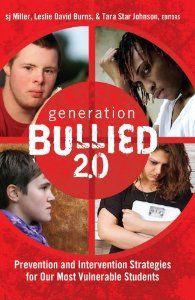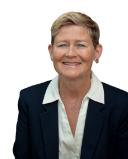Bullying
Generation Bullied 2.0
A new book addressing how to support our most vulnerable and targeted students
Posted November 8, 2013
Full Disclosure: This is not a book review. I am the co-editor of the series that published this volume and this blog entry is a modified reprint of the foreword I wrote for the book.
I was a first year teacher in 1993 when the Massachusetts Governor’s Commission on Gay and Lesbian Youth published its groundbreaking report titled, “Making Schools Safe for Gay and Lesbian Youth.” This report was important for me as I was struggling to find ways to support one of my students at a rural school in New York who was suffering from persistent sexual and homophobic harassment. I attended a conference in the spring of 1994 organized by the Gay and Lesbian Independent School Teachers’ Network (GLISTN, which later became the Gay, Lesbian and Straight Education Network, GLSEN) in Boston to learn more about what I could do for this student and my school. I learned about this report at this life-changing conference and learned valuable skills to begin addressing the problem of homophobia and diversity issues in general at my own school. The first recommendation listed in this report was, “Schools are encouraged to develop policies protecting gay and lesbian students from harassment, violence, and discrimination” (The Governor's Commission on Gay and Lesbian Youth, 1993). Twenty years later, I am honored to write the foreword for this book, which echoes and amplifies this call and adds to it in rich and meaningful ways. Since my first teaching experiences, I have been set on a path to better understand the complex issues of bullying and harassment in schools. I was frustrated by my own experiences in schools with the lack of awareness of and willingness to address the difficult issues of gender, sexuality, body size, race, ethnicity, and disability. These are exactly the issues that Generation Bullied 2.0 addresses in order to share cutting-edge research and practical advice for the education community.
My own early experiences teaching made me more sensitive to and aware of issues related to gender and sexuality in schools, and as I delved deeper, I learned about how issues of race, ethnicity, body size, and disability were also wrapped up in the complex notions of masculinity, femininity, and heteronormativity. Miller, Burns, and Johnson, along with their contributors, have put together a volume that adds critical voices to the public dialogue about bullying. In my early stages of doctoral research, I was disheartened to review the bullying literature and discover the dearth of studies that explicitly mentioned issues of race, gender, sexuality, and disability in their examinations of this phenomenon in schools (Meyer, 2007). I focus primarily on issues of gender and sexuality in my own research (Meyer, 2006, 2008, 2009; ), and am grateful and encouraged to see more work emerging on issues of diversity and social difference in this area. I recently updated my literature review, and am pleased to note that there was a turning point around 2007 when researchers began to consistently pay attention to these factors when researching and writing about bullying and harassment in schools (Meyer, in press). Unfortunately, this increased attention by scholars and researchers has not translated into widespread change in bullying intervention programs, state or federal policies, and everyday practice in most classrooms and school campuses.

The focus in Generation Bullied 2.0 is on the most vulnerable populations in our schools: students who are disproportionately targeted for the most frequent and severe forms of bullying and harassment, students who somehow find themselves outside of the “norm” and can’t find a place to fit in the social hierarchies of their schools. These students are the canaries in the coalmine. If school is a toxic environment for them, then everyone in that community is also being poisoned by being consistently exposed to those negative behaviors. These young people are sounding the alarm, and for whatever reason administrators, policymakers, teachers, and students alike are not responding to these warning signs. They continue focusing on other issues while ignoring the dangerous smog that is slowly squeezing the life, learning, and light out of so many of our children.
We continue to read about the tragic consequences of cyberbullying, sexual harassment, and homophobia in schools. The media has covered story after story of school-aged youth who have ended their lives as a result of the endless psychological violence they experienced in schools. Amanda Todd (14), Seth Walsh (13), Carl Hoover-Walker (11), and Phoebe Prince (15), are just a few of the lives we have lost due to the hostile climate in their schools and peer groups. I have worked with several parents who have lost their children to bullycide, and these parents all want to make some sense out of their loss and have become activists for educational change. They don’t understand why the school didn’t do more, why teachers are reluctant to intervene, why homophobic, fat-phobic, and misogynist cultures are tolerated and allowed to flourish in our schools. Unfortunately, this work won’t bring back their children, but it can hopefully prevent the loss of others. I don’t just mean the loss of life, but the loss of light; many victims of bullying survive, but as this volume points out, they often live with the effects of Post-Traumatic Stress Disorder or other negative health outcomes such as eating disorders, drug and alcohol abuse, depression, and self-harm. Our job as educators is to create safe and nurturing environments where children can learn and grow; where their lights will be protected and nourished, not diminished or extinguished.
I hope you will read this book and then add your voice to the conversation and ensure that these perspectives are not forgotten or ignored in your school communities. It takes courage to speak out against the norms of any culture, but the research and evidence provided in this volume offers strong support for educators and advocates willing to take on this challenge. Generation Bullied 2.0 can help us turn a corner in our nation’s conversation on bullying and violence in schools, and by taking its messages and applying them in your own classrooms and communities, you can be a part of creating safer and more inclusive schools for all.
References
Meyer, E. J. (2006). Gendered harassment in North America: School-based interventions for reducing homophobia and heterosexism. In C. Mitchell & F. Leach (Eds.), Combating Gender Violence in and around Schools (pp. 43-50). Stoke on Trent, UK: Trentham Books.
Meyer, E. J. (2007, April 9-13). Bullying and harassment in secondary schools: A critical analysis of the gaps, overlaps, and implications from a decade of research. Paper presented at the annual meeting of the American Educational Research Association, Chicago, IL.
Meyer, E. J. (2008). Gendered harassment in secondary schools: Understanding teachers' (non)interventions. Gender & Education, 20(6), 555-572.
Meyer, E. J. (2009). Gender, bullying, and harassment: Strategies to end sexism and homophobia in schools. New York, NY: Teachers College Press.
Meyer, E. J. (in press). New solutions for bullying and harassment: A post-structural feminist approach. In R. Schott & D. M. Sondergard (Eds.), School Bullying: New Theories in Context. Cambridge: Cambridge University Press.
Meyer, E. J., & Stader, D. (2009). Queer Youth and the Culture Wars: From the Classroom to the Courtroom in Australia, Canada, and the United States Journal of LGBT Youth, 6(2), 135-154.
The Governor's Commission on Gay and Lesbian Youth. (1993). Making Schools Safe for Gay and Lesbian Youth (pp. 57). Boston, MA: The Commonwealth of Massachusetts


